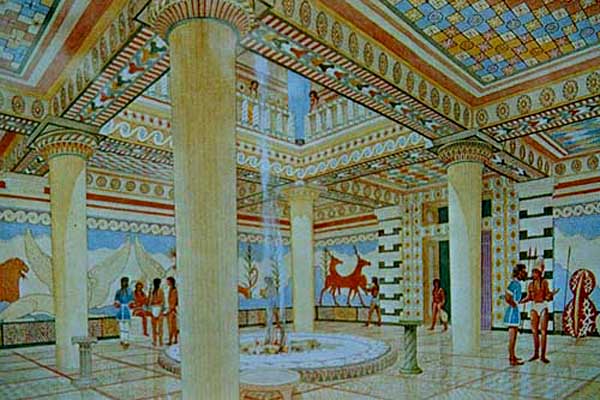Pylos
Pylos, located in mainland Greece on the southwest coast of the Peloponnesus, is the site of one of the most important Mycenaean settlements. It is considered one of the best preserved and best excavated of the major palaces. It dates to the late Helladic period before 1200 BCE.
Pylos was excavated recently by Carl Blegen. The excavations revealed a large palace. This was given the name the Palace of Nestor because of its similarity in location to the palace of the King Nestor named in the stories of Homer. The palace is characteristic of Mycenaean palace construction.
Plan of the Palace at Pylos
While there are no citadel walls, the palace sits on a hill. It consists of many rooms with a large square room known as a megaron at the center. At the center of the megaron is a large circular hearth and on the east side there is a place for a wooden throne. To the left of the entrance there are archive rooms, where many Linear B tablets have been found. There is also evidence of an upper floor and many rooms including pantries and large storage rooms. The east side of the palace is thought to be more residential and it has a smaller megaron called the Queen’s Megaron. The palace at Pylos is known for the bright fresco paintings which have been found on the remains of the palace walls. These include such images as a stylized octopus, a procession and a fighting scene known as the Tarzan fresco.
 Possible rendering of the megaron at Pylos
Possible rendering of the megaron at Pylos
Sources
Biers, William R. The Archaeology of Greece. 2nd Ed. Ithaca: Cornell University Press, 1980.
